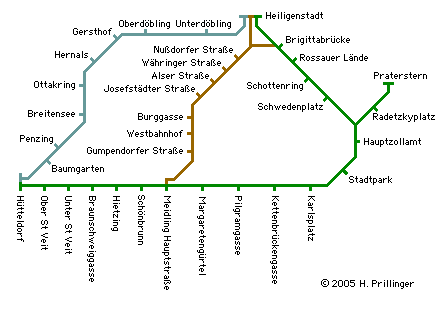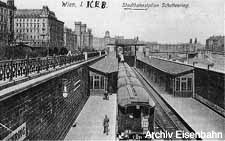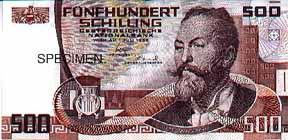The Metropolitan Railway (1898-1918)
When the city decided to regulate the river Wien and the Danube Canal, a committee was formed to debate the possibility of using the opportunity to build an urban railway at the same time. Planning this railway turned out to be difficult, as both city and state were short on money and the army demanded that the lines be planned in such a way that it could be used for troop transports. Then, when construction had already begun, the plans had to be changed again when a citizens' pressure group protested against the railway viaducts along the Danube Canal: a tunnel had to be built, and the additional costs meant that the Outer Ring line could not be extended south to meet the tracks of the Southern Railway. The resulting network was thus fragmentary and of only limited value for the general public:
- Vororte (Suburban) Line: Hütteldorf - Ottakring - Heiligenstadt
- Wiental (Wien Valley) Line: Hütteldorf - Hauptzollamt
- Donaukanal (Danube Canal) Line: Hauptzollamt - Heiligenstadt
- Line to the 2nd district: Hauptzollamt - Praterstern
- Gürtel (Outer Ring) Line: Meidling Hauptstrasse - Heiligenstadt
- Connecting loop Nussdorfer Strasse - Brigittabrücke

Customer numbers remained significantly below expectations; this had to do with the line layout — there were only tangential lines — as well as the high fares, which were significantly higher than those of the tramway. Another problem was the operation with steam engines. Even though electric traction had been used for the Budapest metro in 1896, the Metropolitan Railway's integration with national rail lines would have required a larger electric infrastructure than was thought technically possible at the time.

Schottenring station

Gumpendorfer Strasse station
However, as far as the architecture is concerned, the railway was (and still is) remarkable. The committee had invited the renowned architect Otto Wagner to design the railway, and Wagner complied by supplying the most extensive plans imaginable. Everything — stations, bridges, viaducts — were designed by him (he also designed coaches for the trains, but these were deemed unpractical and not used). Much of Wagner's architecture has been preserved, especially along the Gürtel and Suburban Lines (today operated as U6 and S45). If you ever come to Vienna and are interested in fin-de-siècle railway architecture, you should definitely try the Otto Wagner ride.

Otto Wagner on the old ATS 500 bank note